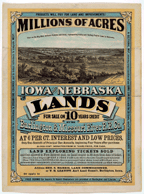

| The Library of Congress | |
 |
 |
 |
SQUEEZING DOCUMENTS: |
|
The aim of this workshop is to get documents to talk to us. First we will look at how two documents were used to create a lesson plan. Then we will model the role of the student in a class; keeping in mind that the students are the first and final consumer of both the teacher's attempt to lead them to information and to understanding that information. (We should say, more accurately, that we desire to get the documents to talk to the students.) Then we will go to work on our own set of documents. We will break some rules. Participants will act as students; they will act as teachers; they will act as students again. We will focus narrowly on specific documents, ignoring, at least for the moment, the broader historical context. We will analyze, we will criticize; we will build, we will tear down, and we will build again. We will use American Memory as our home base, but we will look elsewhere on the Internet for other resources. We will work within a given structure; we will create our own designs. We will orient ourselves backward, that is, we will work with the end in mind. The end, in this case, is to get the teacher to all but disappear, and allow the student to ask the right question of the right document. But don't disappear quite yet: there is work to be done. We will use three methods of inquiry. We will combine these to focus narrowly on and query two primary sources around a lesson plan. The first method involves formulating Document-Based Questions, or DBQs. The second method is asking The Essential Question. Finally, there are my Four Questions that I ask of every document. ObjectivesAt the end of this workshop participants will be able to:
Tasks in briefIn this workshop, participants will:
Resources
Note: Arnold Pulda, teacher, School, Worcester, Massachusetts developed this workshop. |
| The Library of Congress | American Memory | Contact us |
| Last updated 04/08/2003 |